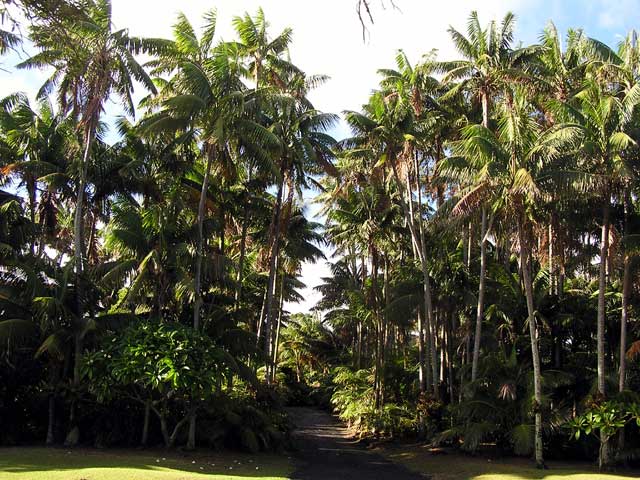Howea forsteriana
From PACSOA Wiki
| Welcome to the PACSOA Palms and Cycads wiki!
If you have any information about this species, please help by updating this article. Once you are registered you can contribute, change, or correct the text, and even add photos on this page. Click on the edit tab above and play around. Any mistake can be easily corrected, so don't be afraid. |
Common Names:[edit]
Kentia Palm,
Sentry Palm,
Thatch Palm
Distribution & Habitat:[edit]
Lord Howe Island where it is widely distributed over the island, from low on the coast line, up onto the mountains.
Description:[edit]
A very graceful, solitary, medium sized palm, with a dark green ringed trunk, to about 10m tall. It has beautifully drooping, dark green leaflets, and a brown hessian like thatch around the leaf bases.
General:[edit]
Probably the most commonly grown indoor palm through out the world, and with good reason, being incredibly tolerant of neglect, and capable of withstanding very low light situations, as well as air-conditioning (and it also looks great !!).
Culture:[edit]
Prefers a lightly shaded position, with moist, well-drained soil, in warm-temperate and sub-tropical areas. Can take full sun as an adult, but they usually look a bit ratty compared to those in a more sheltered location. Not very good in the tropics. If grown as an indoor plant, its is best to give it a spell outside every few weeks, and let it regain some strength.
Reference:[edit]
Palms Throughout The World, David Jones.
Contributed by:[edit]
Eddy Goldman (Figure 1)
Jo Wilkins (Figure 2&3)



